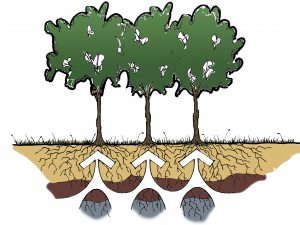Cape Cod is in a fairly unique situation when it comes to wastewater. The generally permeable soils throughout the Cape region make on-site septic systems highly effective for wastewater disposal. For many decades individual septic systems have been relied upon because they can effectively protect human health (when sited correctly) and the relatively low density of development can make the cost of collecting and conveying wastewater to centralized treatment facilities expensive. Septic systems designed to meet the State regulations under Title 5 (310 CMR 15.00) can effectively dispose of wastewater while protecting humans from the bacteria and pathogens wastewater contains. Even when they are functioning correctly though, Title 5 systems are not designed to remove nitrogen and therefore do little to reduce the amount of nitrogen from wastewater that reaches groundwater.
The Massachusetts Estuaries Project (MEP) identified wastewater as the primary source of nitrogen to the Cape’s coastal embayments, with septic systems contributing 94% of wastewater nitrogen and nearly 80% of the controllable nitrogen load on Cape Cod. In order to ensure the continued health and enjoyment of the water resources that are so critical to the character of Cape Cod, more aggressive wastewater management is needed to reduce the amount of nitrogen being delivered to our estuaries and restore water quality. Higher levels of nitrogen removal can be achieved at different infrastructure scales, including nitrogen removing septic systems on individual properties, cluster or satellite systems at the neighborhood or village level, and centralized wastewater treatment facilities. For larger treatment facilities, siting and permitting a suitable wastewater disposal area under the State’s Groundwater Discharge Permit program (314 CMR 5.00) is a critical project element that may limit treatment capacity in some cases. Examples of advanced nitrogen removal at each of these scales exist on Cape Cod, and a continuing mix of approaches will be necessary to effectively manage existing and future wastewater flows in a manner that is protective of the region’s valuable water resources.
Contact
-
Tim Pasakarnistim.pasakarnis@capecodcommission.org





